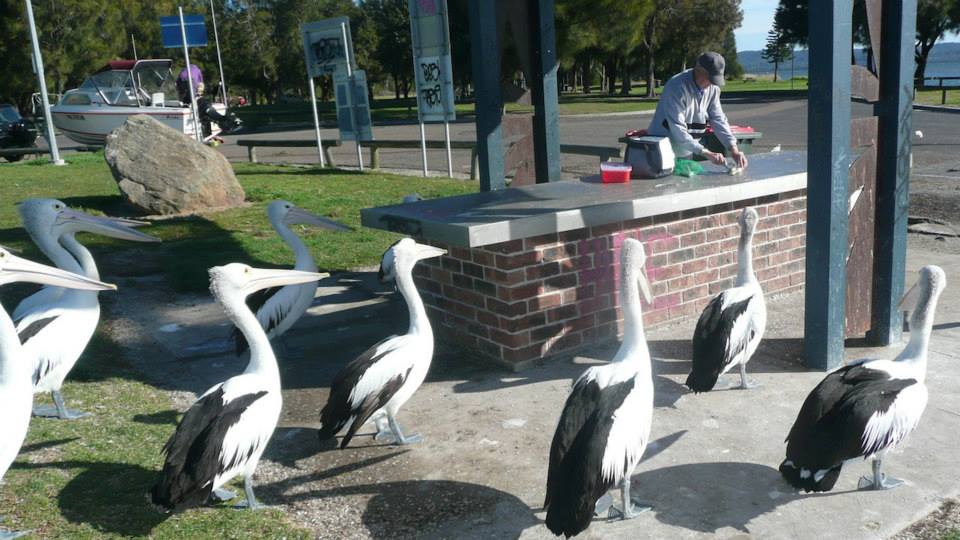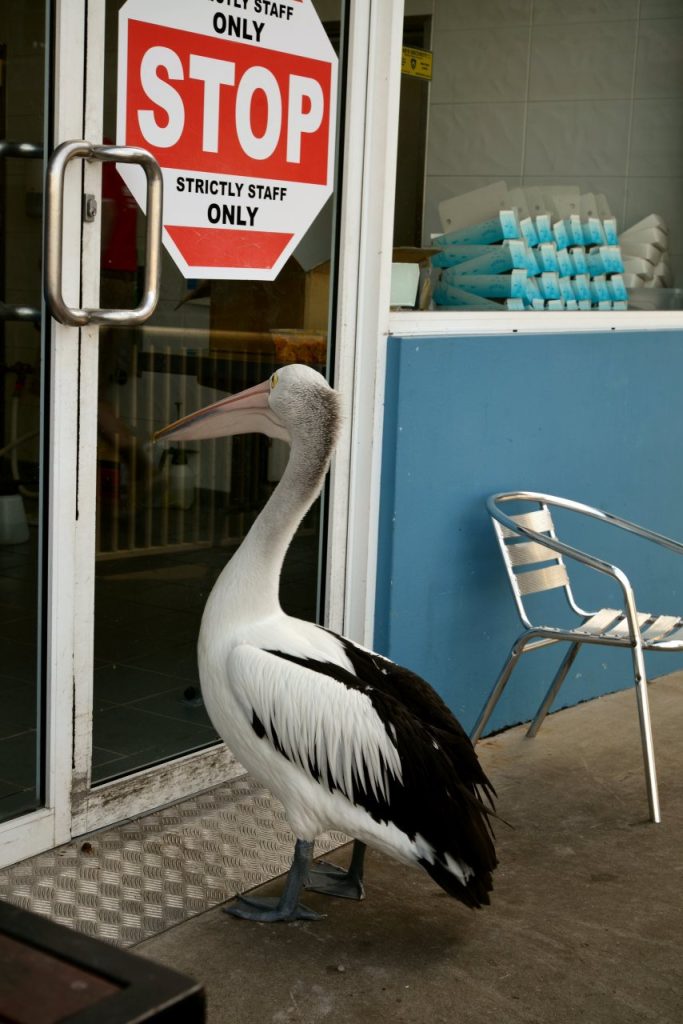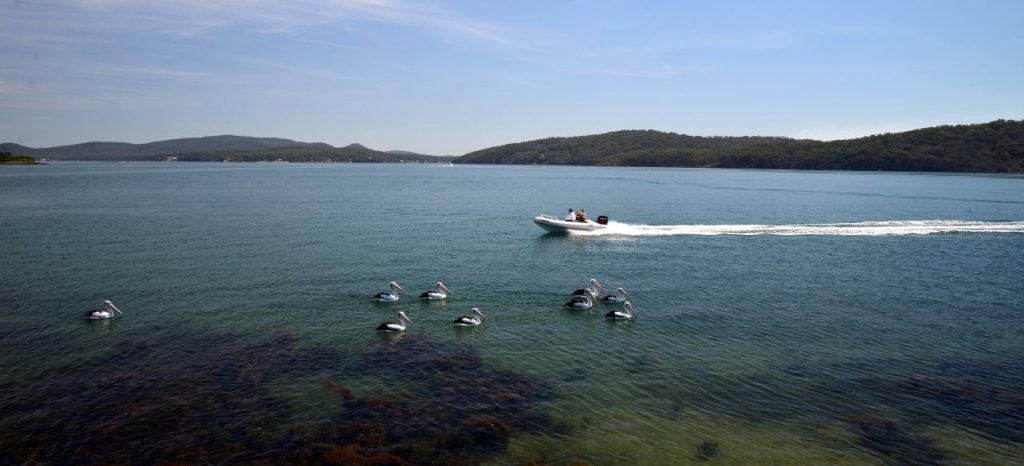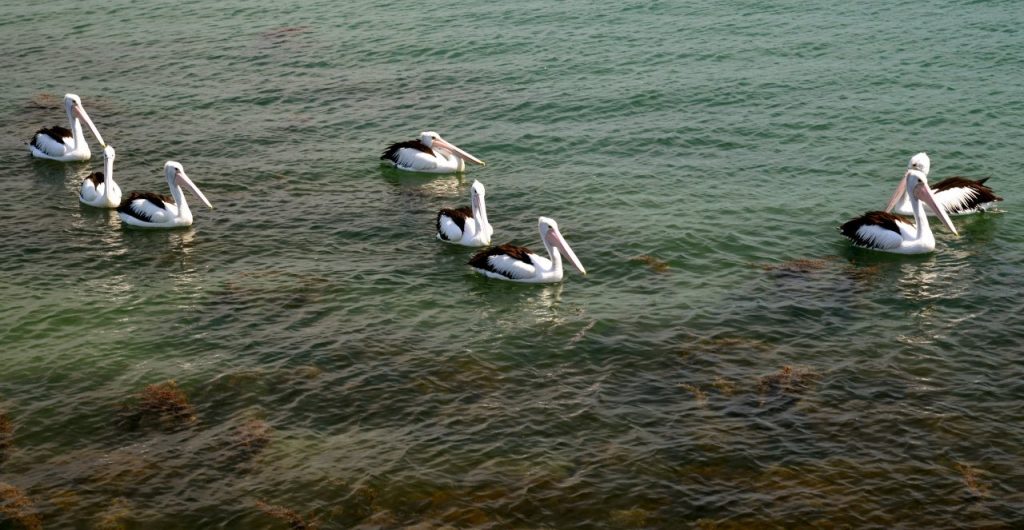Pelicans Of NSW
Introduction to Pelicans
Pelicans are large water birds known for their distinctive long beaks and expansive throat pouches. In New South Wales (NSW), the pelican species you are most likely to encounter is the Australian Pelican (Pelecanus conspicillatus).
This post is dedicated to the memory of Trevor Flight who loved his Pelican Friends at The Entrance. The Entrance is famous for the feeding of the Pelicans and the dedicated few who try never to miss feeding time. Trevor was one of these dedicated enthusiasts and he is sorely missed by his many fans.

Physical Characteristics
Size and Shape
The Australian Pelican is one of the largest birds in Australia. These majestic birds can reach lengths of 1.6 to 1.8 meters, with an impressive wingspan that can stretch up to 2.6 meters. Their most notable feature is their enormous bill, which can grow as long as 50 centimeters.
Plumage
Australian Pelicans have predominantly white plumage with contrasting black wingtips and a line of black feathers extending down their backs. During the breeding season, their bill and large throat pouch can display vibrant hues of pink and yellow.

Habitat and Distribution
Coastal and Inland Regions
Australian Pelicans are highly adaptable and can be found in various wetland habitats, including coastal lagoons, estuaries, rivers, and inland lakes. In NSW, they are commonly spotted along the coastline and in freshwater lakes and rivers further inland.
Migration Patterns
Pelicans in NSW are nomadic, traveling great distances in search of abundant food sources. Their migration patterns are influenced by seasonal changes and the availability of water bodies.
Diet and Feeding Behavior
Fish and Marine Life
Primarily, Australian Pelicans feed on fish. However, they are opportunistic feeders and will also consume crustaceans, insects, and even small birds on occasion. Using their large bill and throat pouch, they scoop up fish and water, then drain the water before swallowing their prey whole.
Cooperative Hunting
Pelicans are known for their cooperative hunting techniques. Groups of pelicans can actually work together. It allows them to herd fish and get them into shallow waters. This process makes the fish easier to catch. This social behavior ensures greater hunting success.

Breeding and Nesting
Breeding Season
The breeding season for pelicans in NSW typically occurs from August to January. During this time, pelicans form large breeding colonies on islands or secluded areas of wetlands.
Nesting Sites
Pelican nests are usually simple scrapes on the ground, lined with vegetation and feathers. This world is balanced with both parents having to take turns on incubating the eggs and feeding the chicks.
Conservation Status and Threats
Population Stability
The Australian Pelican is currently listed as a species of Least Concern by conservation organizations. Their populations in NSW are stable, thanks to their adaptability and widespread distribution.
Environmental Threats
Despite their stable status, pelicans face threats from habitat loss, pollution, and human disturbance.
Pelicans in Culture and Tourism
Cultural Significance
Pelicans hold a special place in Australian culture and are often featured in art, literature, and folklore. Their unique appearance and behavior make them a popular subject for photographers and wildlife enthusiasts.
Tourist Attraction
Pelican feeding events, such as those at The Entrance on the Central Coast, have become popular tourist attractions. These events provide an opportunity for people to observe pelicans up close and learn more about their ecology and behavior.

Pelican Adaptations
Specialized Bill and Pouch
The pelican’s bill and throat pouch are highly specialized for feeding. The bill is sensitive to touch, allowing pelicans to detect fish even in murky waters. The pouch can expand to hold several liters of water, which pelicans use to filter out fish.
Efficient Flight
Despite their large size, pelicans are efficient fliers. They use thermals to glide effortlessly through the air, conserving energy during long-distance flights. This adaptation is crucial for their nomadic lifestyle.
Human Interaction
Coexistence with Humans
Pelicans often coexist with humans, especially in urban areas near water bodies. They can be seen perching on piers and jetties, waiting for scraps from fishermen. While this interaction can benefit pelicans, it also poses risks from discarded fishing gear and pollution.
Conservation Efforts
In NSW, various conservation efforts are in place to protect pelican habitats. Wetland restoration projects and pollution control measures help ensure that pelicans have safe breeding and feeding grounds.
Conclusion
The pelicans of New South Wales are an iconic part of the region’s wildlife. Their adaptability, unique physical characteristics, and fascinating behaviors make them a subject of endless interest. By understanding and appreciating these remarkable birds, we can contribute to their conservation and ensure that they continue to thrive in the diverse habitats of NSW.
The Precious Pelicans Of New South Wales – Some Photos By Mike Fernandes
Join the Discussion
Share Your Thoughts
Have you ever observed pelicans in New South Wales? What did you find most fascinating about their behavior or appearance?

4 thoughts on “The Precious Pelicans Of New South Wales”